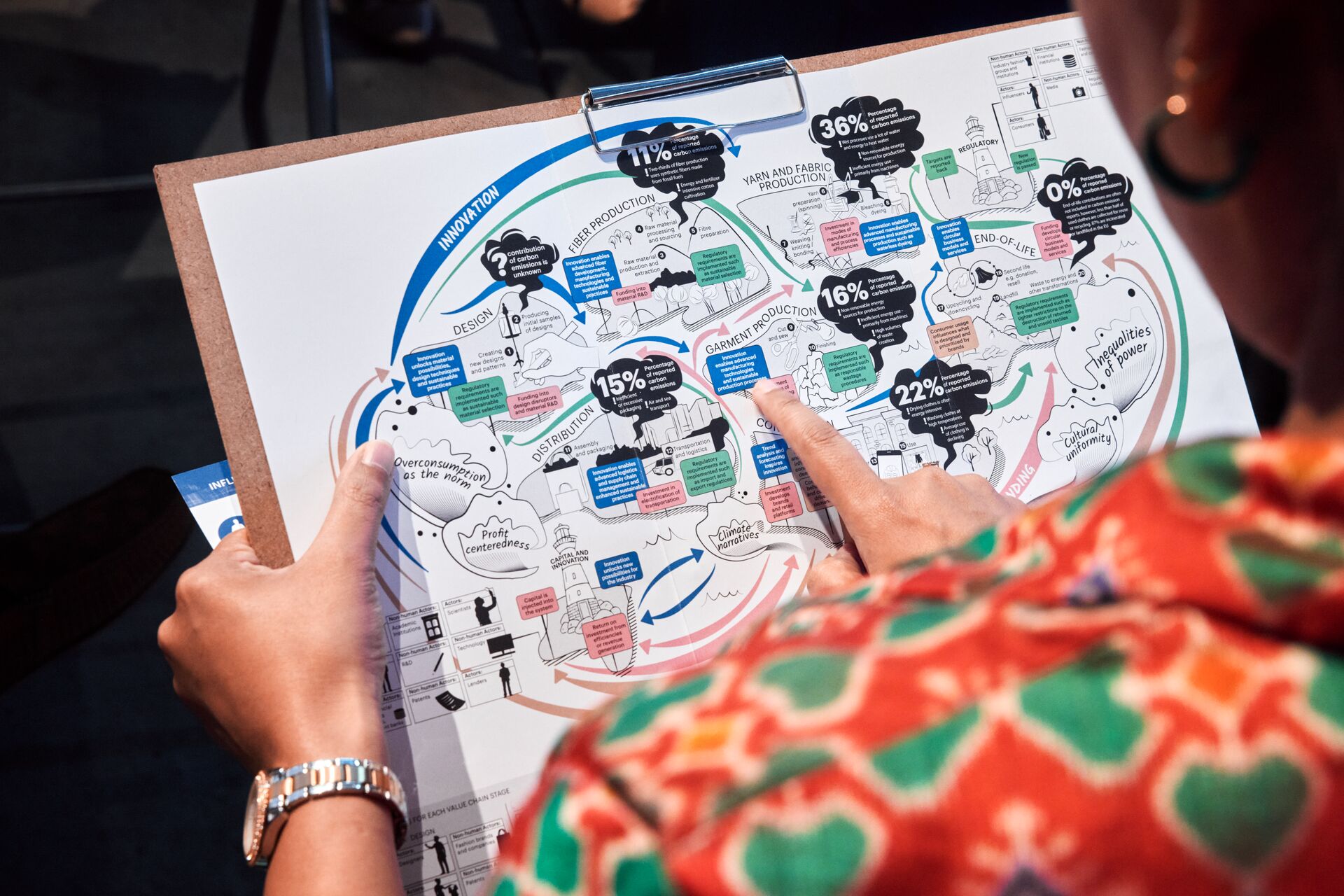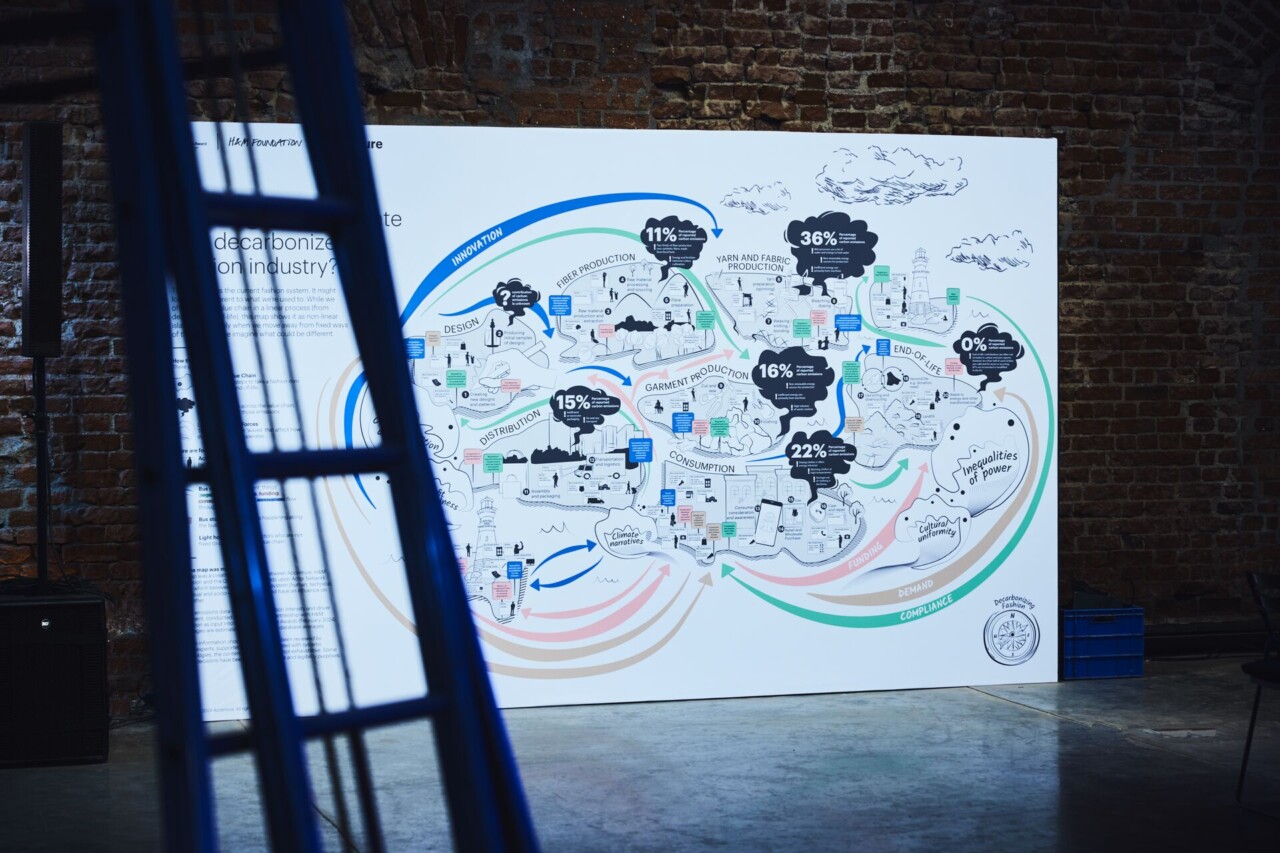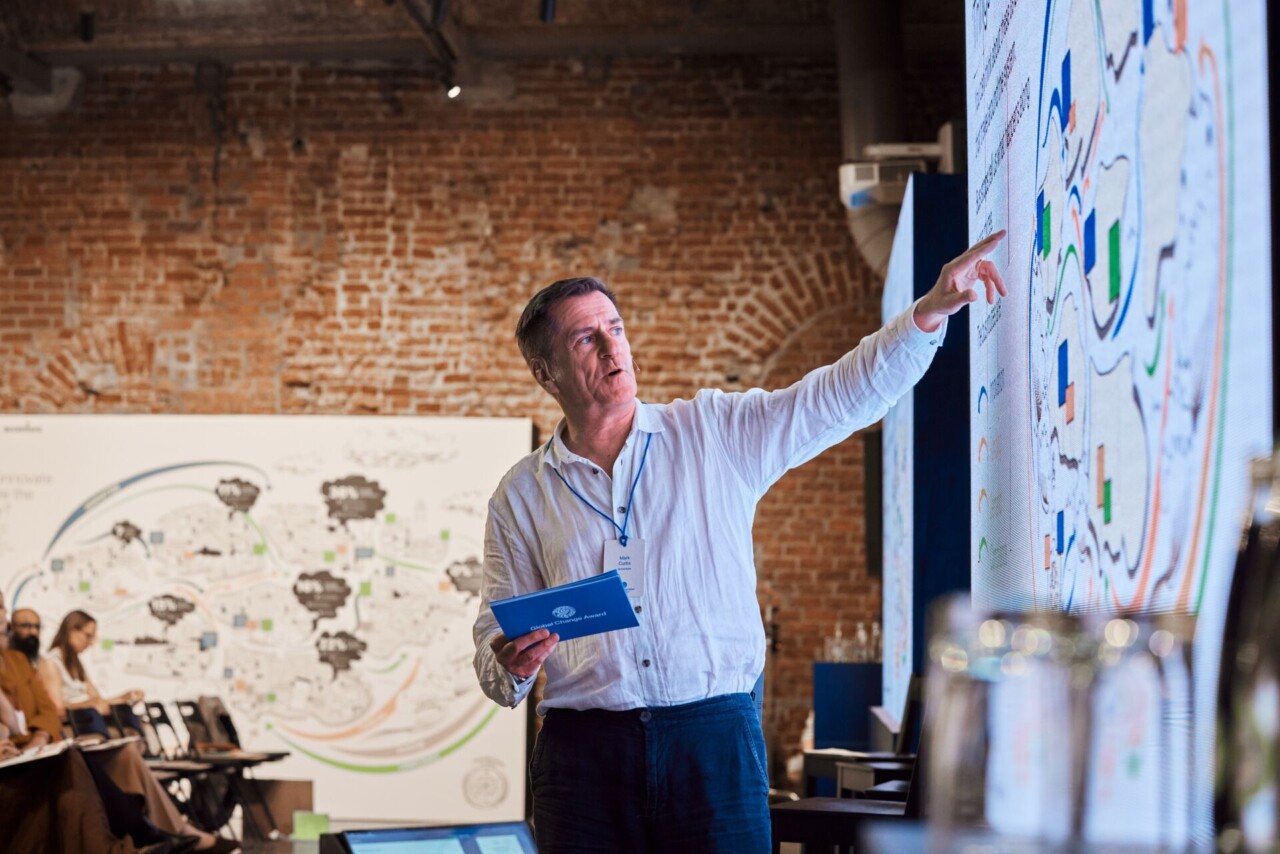How a new System Map can guide the industry towards a net-zero future
By mapping out the path to industry-wide decarbonisation, the System Map helps turn reflection into action, guiding the textile sector toward meaningful change. Now, we are making the map available to the entire industry – inviting actors across the value chain to explore their role and drive real impact.

The System Map challenges traditional ways of thinking about the textile value chain.
During the two-day Global Change Award Summit, hosted in Mumbai, India in October 2024, global thinkers and leaders came together to imagine a net-zero future where the decarbonisation of the textile industry becomes a reality. To fuel this vision, a pioneering System Map* was introduced – an essential tool designed to help industry actors break down the journey ahead and turn ambition into action.
In a solution session during the summit, over 150 changemakers, systems thinkers, suppliers, brands, industry experts, and investors were asked a crucial question: What needs to change in the textile industry? To explore this, participants were introduced to a Fashion System Map, created by long-term GCA partner Accenture, who also hosted the session. The System Map, showcasing how flows and systemic forces impact emissions in the textile industry, aimed at helping actors position themselves on the map, reflect on their place in the system, and workshop ways to drive systemic change through impactful innovation and cross-sector collaboration.

Rethinking the value chain
The System Map challenges traditional ways of thinking about the textile value chain. While it is often viewed as a linear process – from design to end-of-life – this map presents it as a series of interconnected islands. Why? Because only by moving away from fixed perspectives can we start to imagine new possibilities and identify opportunities for real change.
The System Map isn’t a blueprint, but rather a catalyst for discussion that can help different actors identify their place in the system and start thinking about how they can contribute to advancing the decarbonisation journey, explains Annie Lindmark.
“Depending on where you are in the system, challenges and opportunities are going to look different,” she says.

Spotting your spot in the system
Visualising the system and its many interconnected parts is the first step in accelerating positive change. During discussions in Mumbai, participants highlighted the need to go beyond addressing isolated issues to rethinking the entire production cycle, from raw material sourcing to end-of-life. They also acknowledged that working on systems change is challenging and complex, but necessary for the long-term and sustainable change needed to address the increasingly urgent impacts of climate change.
By designing a map that felt invitingly creative, not technical, we could facilitate discussions in the workshop around the important – and sometimes uncomfortable – challenges on the table and to help people who are not usually represented at all to start to tell their story.
Rachel O’Reilly, Global Sustainability Research Lead, Accenture Song
“In order for innovations to succeed, the system needs to tweak and change itself too,” says Annie Lindmark. “While early-stage innovators have the ability to be very fast and adaptive to the changes they want to see, we also need to create the environment in which they can best thrive and transform that existing system”, she explains.

Sharing the System Map with the industry
We are now making the System Map available to the entire industry – inviting actors to reflect on their role and explore how they can drive real change. Whether within their own ‘island’ in the value chain or by supporting changemakers across the system, this map is a tool to highlight the need for collaborative, systemic approaches that put both people and the planet at the centre.
“At H&M Foundation, we believe in sharing industry insights to drive real change. Making this map available is one way to foster collaboration, spark collective action, and accelerate the transition to a net-zero future”, Annie Lindmark concludes.
*The System Map is a creative collaboration between Accenture and the H&M Foundation. It builds on Actor-Network Theory, which posits that all parts of a system – human, technical, conceptual, and socio-cultural – can act and influence one another. Carbon emissions data is derived from an assessment of carbon intensity and drivers across the textile value chain, based on established research reports. While the information shown in this map has been reviewed by industry experts supported by data, and created with systems methodologies, the content is illustrative and not exhaustive. Some editorial decisions have been taken for creative and legibility purposes.
In brief
In a solution session during the summit, over 150 changemakers, systems thinkers, suppliers, brands, industry experts, and investors were asked a crucial question: What needs to change in the textile industry?
Learn more about the key takeaways from the solutions session.



